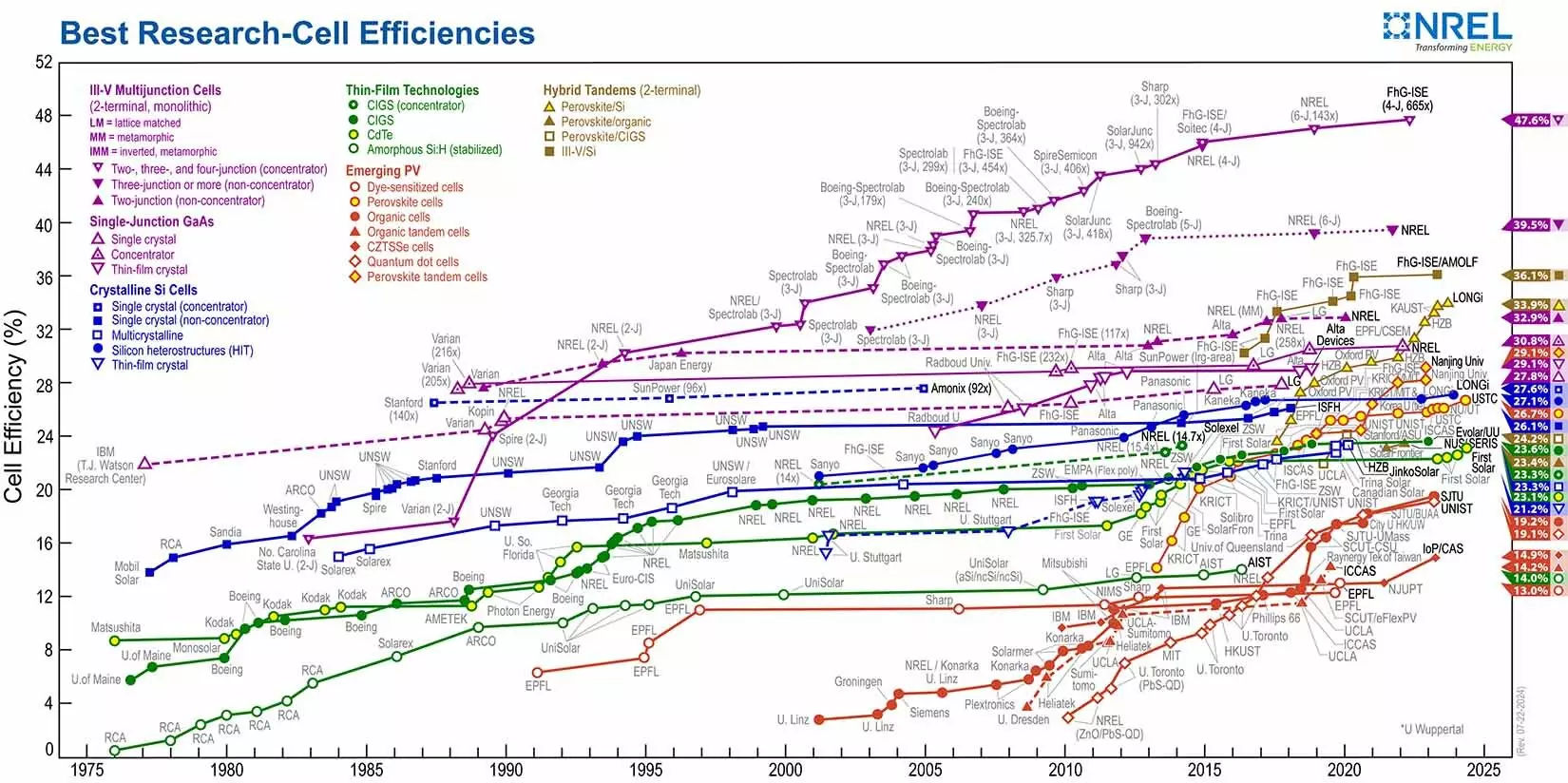As climate at the forefront of global discussions, the appeal of solar energy continues to grow, even in regions traditionally deemed unsuitable for it. The UK, often characterized by its gray skies and rainy weather, is witnessing an increasing reliance on solar power as a significant contributor to its energy landscape. This shift reflects dual advancements in solar technology and manufacturing efficiency, setting the stage for a greener future. The transformation of this sector signals not only a trend but a potential seismic change in how energy consumption is viewed and managed.
At the heart of the solar revolution are two pivotal developments: improved production methods and enhanced power conversion efficiency. The production of solar panels has become more streamlined and cost-effective, with teams of scientists and engineers focusing on refining every aspect of panel fabrication. This efficiency in manufacturing allows for the mass production of solar panels, making them more affordable and accessible to consumers and businesses alike.
Simultaneously, one of the most promising advancements in solar technology is the rise of tandem solar cells. While traditional solar panels, primarily composed of silicon, have a conversion efficiency capped at approximately 29%, the latest research introduces a new player in the field: tandem cells. These innovative systems layer different materials to optimize sunlight absorption, leading to significant improvements in energy conversion rates. Recent breakthroughs indicate that tandem solar cells could achieve efficiencies upwards of 34%, which would represent a dramatic leap forward in solar technology.
The engineering behind tandem solar cells involves stacking multiple layers of materials, allowing for a broader spectrum of light absorption. Current research prominently features a combination of silicon and perovskite—a material that has rapidly gained traction since its discovery in the last two decades. Perovskite stands out due to its exceptional ability to absorb blue light more efficiently than silicon, enhancing the overall energy capture of solar panels. A recent study from LONGi technology revealed a groundbreaking perovskite-silicon tandem cell that achieved a remarkable efficiency of 33.89%, unlocking new potential in solar energy production.
While perovskite materials present a revolutionary opportunity, challenges remain. The integration of these materials into large-scale panels involves substantial engineering hurdles, as the high-efficiency cells currently produced exist as small-scale prototypes in laboratory settings. The endeavor to translate this success from microscopic applications to larger formats necessitates ongoing research and development.
The economic ramifications of improved solar panel efficiency are noteworthy. As the conversion rates rise, the need for fewer panels translates to lower installation costs and reduced space requirements for solar farms. Economically, this could lead to heightened profitability for energy producers while also potentially benefiting consumers. It’s estimated that improved efficiencies could elevate savings for households equipped with rooftop solar units significantly—from around £558 annually to £709—marking a tangible benefit for many families.
However, the current electricity pricing mechanism in the UK complicates the realization of these savings. It remains uncertain whether consumers will see a direct correlation between increased efficiency in solar panels and a reduction in overall energy bills. More consistently, users might find their savings through retroactive grid integration and the sale of excess power back to the grid, though the compensation often remains underwhelming.
While the advancements in solar technology are promising, concerns regarding sustainability cannot be overlooked. The extraction and processing of materials utilized in solar cells, such as lead and indium, present environmental challenges. These aspects of production warrant careful examination, as the industry strives to achieve high efficiency alongside sustainability.
To ensure a holistic approach in the development of solar technologies, ongoing research must address the lifecycle impacts of materials used. The ambition is to create not only efficient energy solutions but also environmentally sound practices that will contribute positively to the global effort against climate change.
Despite the hurdles encountered in improving solar panel technology, the scientific and industrial community remains steadfast in its commitment to innovation. The increasing efficiency of perovskite-silicon tandem cells heralds a potential turning point in how solar energy can shape the transition toward renewable sources worldwide. With growing investments and research breakthroughs, solar energy is poised to play a crucial role in the future energy landscape, fulfilling both economic and environmental goals. The advancements in this space reveal a brighter path ahead—one where solar energy will become an integral component of a sustainable global energy model.

